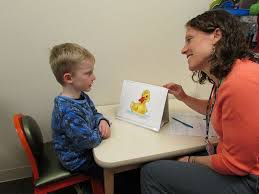In a major leap toward understanding the biological intricacies of aging, researchers from the Chinese Academy of Sciences (CAS) and BGI Research have discovered new insights into how aging manifests at the cellular level. By exploring immunoglobulins—key proteins in the immune system—the team has identified fundamental mechanisms through which these molecules influence the aging process.
The researchers constructed high-precision spatial transcriptomic maps, analyzing millions of spatial spots across nine organs in male mice. These maps, which provide detailed visualizations of over 70 cell types, are part of a novel “Gerontological Geography” (GG) landscape. GG reveals key insights into aging by mapping the spatial characteristics of cellular degradation and disorganization across multiple organs. The findings, published in the journal Cell, offer a groundbreaking step toward understanding and potentially countering aging’s effects on the body.
“This landscape is a significant step forward,” said Professor Liu Guanghui, one of the study’s authors. “It pinpoints the epicenters of aging within multiple organs and uncovers immunoglobulin accumulation as a central aging characteristic and driver.”
The accumulation of immunoglobulins was identified as a signature feature of aging within these mapped regions, suggesting that these proteins may drive or accelerate aging processes. The analysis highlights that structural disorganization and cellular identity loss are universal hallmarks of aging, showing how structural breakdown can lead to the decline in organ function commonly associated with aging.
One of the study’s groundbreaking discoveries involves “senescence-sensitive spots” (SSS), specific areas in tissues that appear particularly vulnerable to aging’s impact. The study found that areas closer to SSS displayed heightened tissue disarray and a more pronounced loss of cellular identity. This observation suggests that these spots might serve as focal points for aging within organs.
This is the first study to map the spatial transcriptome of aging across multiple organs in mammals, providing a precise view of aging’s effects at the tissue level. By uncovering how cellular organization and identity deteriorate with age, the researchers aim to open new avenues in aging science that could ultimately lead to ways of delaying or mitigating age-related decline and diseases.
The team’s findings mark an exciting advancement in the field of gerontology, offering a fresh understanding of aging’s cellular underpinnings and reinforcing the importance of spatial structure in age-related organ deterioration. As scientists continue to unravel the mysteries of aging, this research brings hope that age-related diseases might one day be slowed or prevented entirely.












